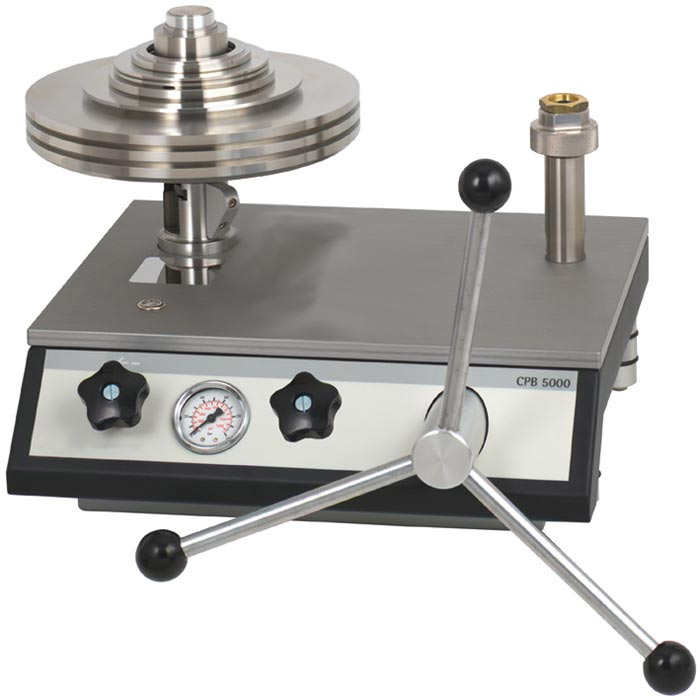CPB5000 piston pressure gauge

Application of piston gauges
The benchmark defines a range of 10 MPa (pneumatic) or 40 MPa (pneumatic with oil separator)
The reference instrument for measuring, adjusting, and calibrating pressure gauges in factories and calibration laboratories
Complete stand-alone system for on-site use
Functional characteristics of piston pressure gauge
Total measurement uncertainty: 0.008% of reading
Retrievable factory calibration certificate (standard) in line with national standards; DKD/DAkkS calibration certificate available upon request (optional)
Long-term stable operation, only need to recalibrate every 5 years
The weight set is made of stainless steel and aluminum and can be adjusted according to local gravity
Provides a patented ConTect quick release system that quickly and safely replaces the piston cylinder system to change the balance range
Description of piston pressure gauge
Mature benchmarks
Piston pressure gauges are the most accurate instruments on the market for calibrating electronic or mechanical pressure gauges, measuring pressure directly (P = F/A). The pistons are manufactured from high quality materials to minimize measurement uncertainty and provide long-term stable operation. Due to the above characteristics, this type of piston gauge has been used in many years in calibration laboratories in factories and industrial, national institutions and research laboratories.
Run independently
The CPB5000 piston pressure gauge uses an integrated pressure source and pure mechanical measurement principle, making it ideal for on-site maintenance and overhaul.
Basic principles
Pressure is the pressure within a unit area. Based on this, the CPB5000 piston gauge uses a precision-engineered piston-cylinder system as the core component to generate individual test points by loading weight groups.
The weight group is best divided into different quality levels, so that the weight of the load on the balance is proportional to the target pressure. By standard, these weights are manufactured to standard gravity (9.80665 m/s²), but users can also adjust to local gravity and DKD/DAkkS calibration.

